Seats and Fit For the Rider
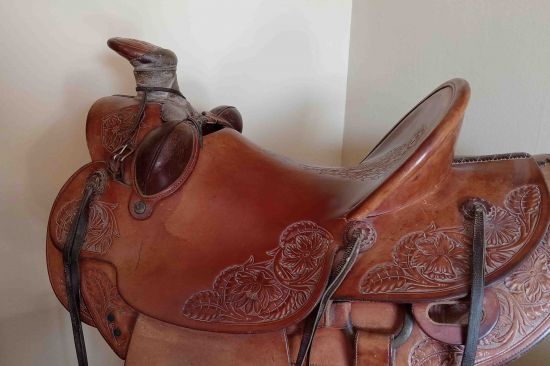
Talking today about the seat in a saddle and how it affects fit for the rider. Something to know is that with western saddles, the seat is not part of the tree. It is added on top of the tree by the saddle maker. Yes, a tree maker can make it easier or harder for a good saddle maker to build a good seat, but the feel and shape of the seat is the saddle maker’s job.
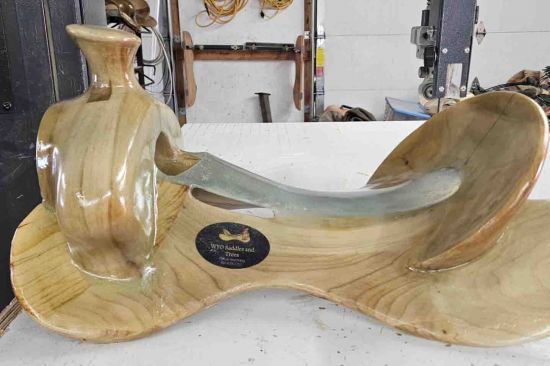
To understand western saddle seats, it is good to have a basic understanding of how a seat is made. First off, you have a strainer put onto the tree as the foundational layer of what is called the ground seat – the seat that is under the final layer of leather you see on the top of the saddle. The strainer starts from the cantle and covers the channel between the bars. It can be made of a thin piece of tin or of a thick, firm piece of leather. Either work well but the quality of workmanship in how they are put in is far more important than the type of strainer. Both have pros and cons in their use. Many, but not all, trees covered with fibreglass or other synthetic materials have the strainer built right into the tree, as in this well made tree made by Dusty Smith of WYO Custom Saddles and Trees. The strainer forms the base for the rest of the ground seat.
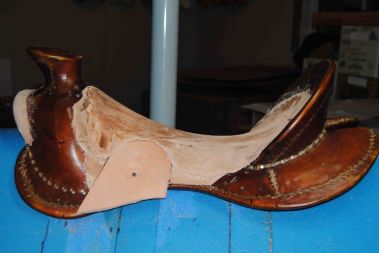 |
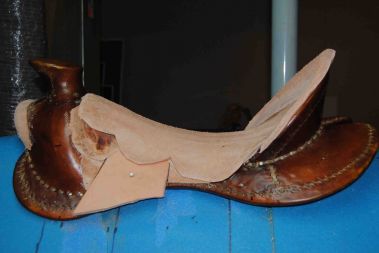 |
A good saddle maker then adds a number of layers of leather on top the strainer, skiving and shaping each of them down to the shape of the seat they want to make. This process can be time consuming as they have to glue different layers in, wait for the glue to dry, and then shape that layer before adding the next.
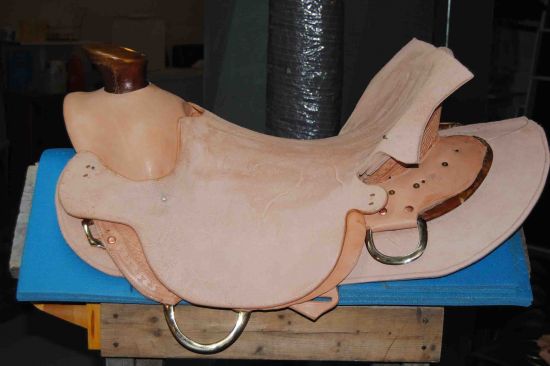
On top of the ground seat is the seat leather which covers the ground seat and goes from the front of the cantle and to the back of the fork. It also includes the seat jockeys and, depending on the way the saddle is constructed, the front jockeys as well.
So that is how a good seat is made. But you can understand that in production shops, they generally don’t take that kind of time. Their seats can be as simple as a strainer built into the tree covered with 1/8” of some kind of foam and then the seat leather on top. So basically what the rider in those saddles feels is the shape the tree maker built into the tree. And while some makers shape their seats well, others don't take the time... Quality matters…
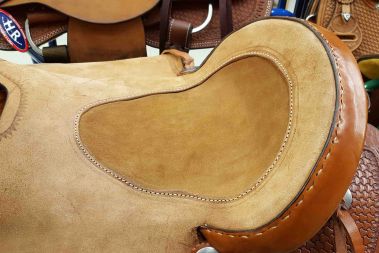 |
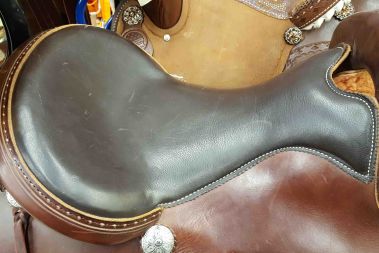 |
So what makes a comfortable seat? Is it padding? These two padded saddles are made in different ways. The first has an inlaid seat where the padding is laid “into” the seat leather. The second is an overlaid seat where the padding is laid “over” the seat leather. In both cases with these saddles, you may have problems with where the edges connect. (Have you seen this idea before?) Neither of these are good quality saddles. A good saddle maker can make inlaid and overlaid seats that are flush with the seat leather and would not rub the rider like these might. So just because they have padding doesn’t necessarily make them comfortable.
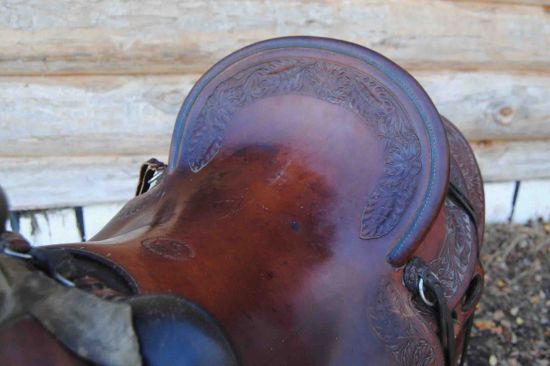
Here is a saddle with what is called a “hard seat” – just leather over the ground seat with no padding. You may look at this and say “Ouch! It would really hurt to ride that saddle!” But we can assure you, because this is Rod’s saddle that he worked out of for years, putting on many, many miles, that this hard seat saddle is very comfortable. Why is it so comfortable? Because a very good saddle maker put time and skill into shaping it. Just like a tree that doesn’t fit the horse can sore them up despite how much padding you use, it is the shape of the seat that determines how comfortable it is – not the padding.
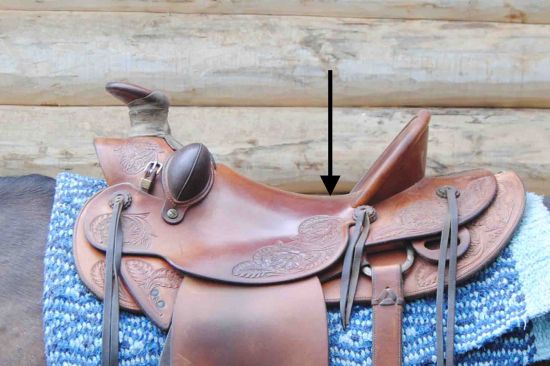
So what things do you look for about shape in a good seat? The first thing is to look from the side to see where the low spot in the seat is relative to the cantle. Gravity always works, and your pin/seat bones will end up in that low spot. We prefer a low spot just a bit ahead of the points where the cantle meets the bar. This is the best place to line up the shoulder, hip and heel of the rider. Note that the lowest spot will be a bit different if the saddle is on a stand (where they typically tip forward) and if it is tipped forward a bit on a downhill horse.
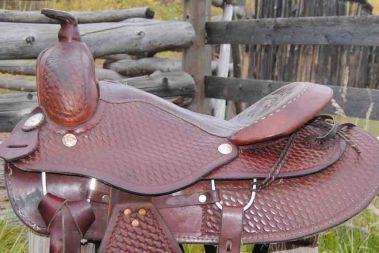 |
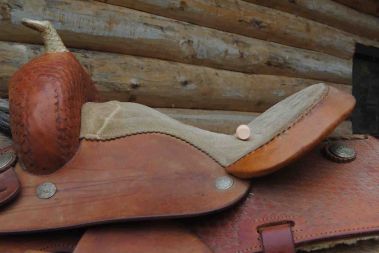 |
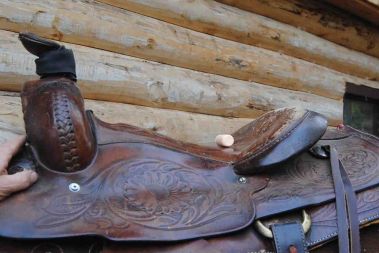 |
Unfortunately, many saddles are made with the low point right at the base of the cantle, as in these three saddles. This will throw you back into the cantle with your feet out in front of you, and you will always be fighting to sit upright in this type of seat. One thing you can do to find the low point on your seat is, with your saddle on your horse, to put something that will roll on the seat. It will go to the lowest point which, on these three saddles, is right at the base of the cantle. And you don’t want this!!
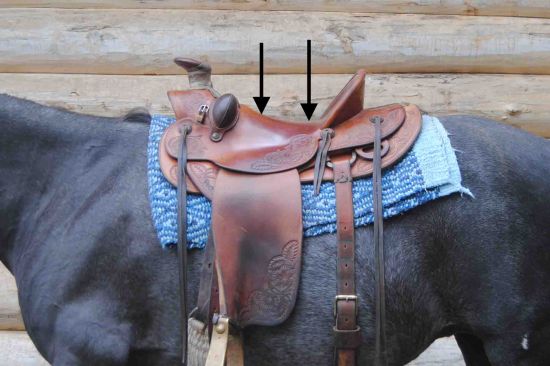
The next thing you want to look at is where the stirrup leathers are set relative to that low spot on the seat. You want them so that as you sit in that low spot, your legs are where you want them positioned. This can vary depending on what discipline you ride in, but generally you want your heel close to being below your hip.
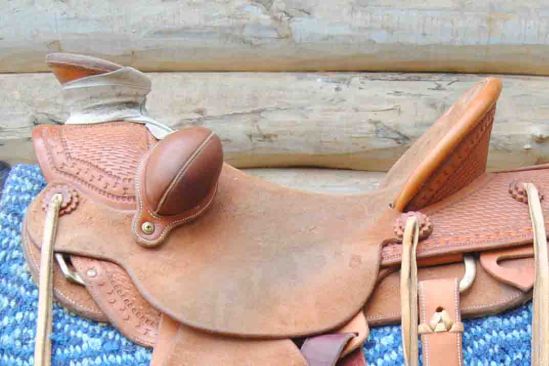
Something else you want to look at is the shape of the rise toward the fork. You want enough room for the rider without rubbing... more sensitive parts, to put it delicately. (Please see our Seat Length and Thigh Length page for more information on how much room you want there.) Then the rise in the seat makes a nice “pocket” that helps keep the rider secure in the saddle. This well made saddle has a nice pocket and a well shaped rise to the fork.
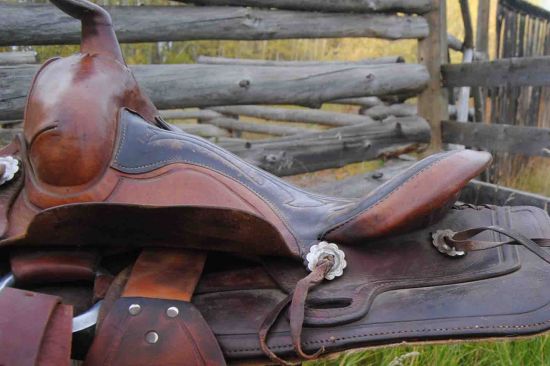
In contrast to this really bad seat where the low point not only throws you into the cantle, but the lack of room for the rider with a straight, fast rise to the fork means you will have to sit back on your pockets to be at all comfortable.
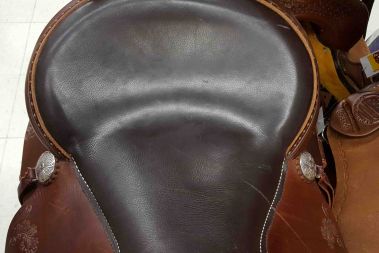 |
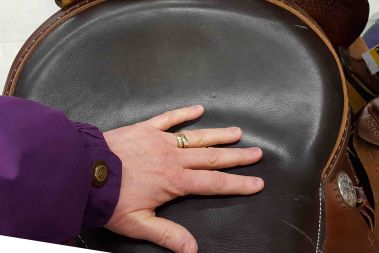 |
Next, look from the front to see the width and the shape of the seat. Here is a lower quality saddle with a very wide and flat (from side to side seat) that drops off quickly, leaving you with a ridge that will dig into your leg.
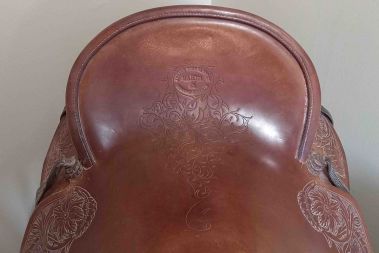 |
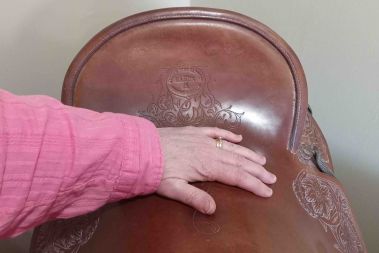 |
In contrast, this hard seat saddle has a well crafted shape with a flat spot (side to side) wide enough to support your seat/pin bones and not spread them apart, and yet curving down from there in a smooth pattern that supports your leg without high pressure points.
Once you are done looking, you should run your hands all over the seat, feeling for lumps and bumps and other things that will create pressure points. (Hmm… seems like I have heard about similar concepts somewhere…)
There is a lot of talk right now about “male vs female” seats, with the idea that women need a different seat than a man does. But this is overly simplistic. The truth, from research, is that there are many pelvic shapes and sizes in both men and women, and a saddle that is comfortable for one person can be uncomfortable for another, regardless of gender.
So just like you need to try a saddle on a horse to see if it fits, you have to sit in a saddle to see if it is comfortable for you. A note though – make sure it is oriented the same as it will be on a horse to really get a good feel of it. Saddle stands generally tip the saddle forward, so what you feel on a stand will be different than what you feel on a horse.
So does this affect the horse? Of course it does! How you sit on the top of the saddle definitely affects what the horse feels under it. If you are sitting toward the back of the saddle, because that is where the seat throws you, it puts more pressure further back on the horse. If you are uncomfortable on the saddle, for whatever reason, you will be moving around more trying to get more comfortable, and the quieter the rider, the easier it is for the horse to carry them. Some people say, "It doesn't matter if it doesn't fit me, so long as it fits the horse." The truth is, if it doesn't fit you, it won't be the best for your horse either. You need something that works for you both to have enjoyable rides together.
